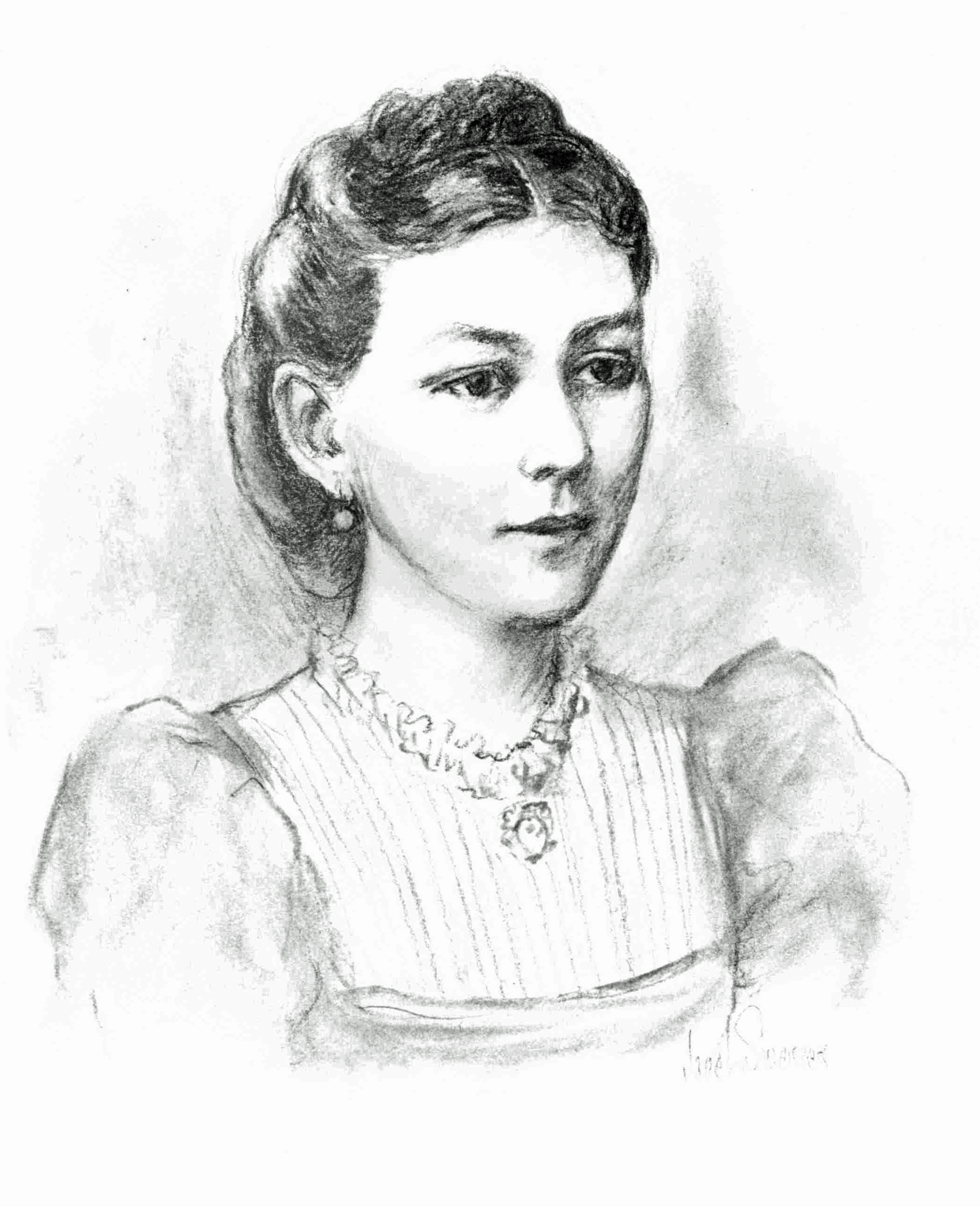Photos
Right-click [Mac Control-click] to open full-size image:

Ane Katrina Jorgensen
Ane Katrine Jorgensen
Born: 17 September 1844 at Stokkemarke, Maribo, DenmarkLIFE SKETCH ANE KATRINE JORGENSEN NIELSON
Katrine was born on the Isle of Lolland, a province of Denmark. She was the sixth child of Jorgen Christensen and Ane Kirstine Rasmussen. Her mother died before Katrine turned two. She was placed in the home of a family named Beauboam or Speamsbeam, who also raised her future "sister- wife," Elsie Rasmussen, who was fourteen-years older. Because of the poor circumstances of their foster parents, these two girls were forced to work as a means of support. Elsie went into the fields and worked as a peasant while Trena went to the city of Copenhagen where she found employment in the homes of the wealthier class of the Danish nobility. This experience was of untold value to Trena. Not only did she partake of the fine atmosphere of these homes but it developed in her a refinement and polish that stayed with her always. She also became a cook of note. The family with whom she was employed would compare favorably with one of our United States senators.
As a cook for such a family she had plenty of opportunity to show her talents. Elsie's daughter, Julia, stated, "I have heard her say that on many occasions, for large dinners for state functions, etc. she would have to roast a deer and it was to stand on the table as though it was still alive. With the roast deer, of course, went all the other courses of a well arranged dinner. Thus in part are a few of Trena's businesses as a cook."
Trena joined the church 15 July 1866 while yet in Denmark. When she was about thirty her foster father provided her with funds for immigration as she wished to find her brother. She settled in Parowan, Utah. Her foster sister, Elsie, was married to Jens Nielson, living in Cedar City, at the time. She called on Elsie, a great surprise which, gave cause for a happy reunion. From this time on Trena made her home with the Nielsons; she never went back to Parowan. About six months after her arrival at Elsie's home she became Jen's third wife. She, Jens and his daughter, Margaret, made the six week trip to Salt Lake where they were married. Of course, the trip would have to be made by team and wagon.
Jens had already built a house to accommodate hs two wives. Now he was confronted with the problem of making way for his third wife, so he built two more rooms on the south side of the house. Thus his three families lived under one roof. Now set up for living, it became Trena's duty to adjust to this complete new life.
Julia wrote, "Unaccustomed to pioneering, as her early life was one of luxury compared to the early experiences of the early Utah settlers, she found it a rather difficult task to adjust. Yet she made the best of what she had, and was ever willing to demonstrate her ability as housewife. She became the mother of three fine children Annetta, Uriah Albert and Freeman August. These children seemed to fill that spot in her life that heretofore had been vacant. She took added delight in her family. At any public or family function, it became Trena's task to make the cakes or many times the entire dinner. Few women had the ability to reign over the kitchen or dining room as did Trena."
Jens was called by the church to settle San Juan County. He of course, acted in this calling as he did on four other calls and began the preparing to lead the group of settlers into this new country. His first consideration was his family. It was decided he should get Aunt Kirsten, his second wife to make the long hard trip, leaving Trena and Elsie in Cedar. Elsie later made the trip to Bluff, but Trena never left Cedar. She now had the entire house to herself and family. She rented part of the house, the rent money becoming her means of support.
In 1884 word reached Bluff of Trena's illness. Elsie and Julia went back to help care for her. She was suffering from rheumatism. Julia indicated that an old friend of Trena's from Denmark married to a Mr. Mortensen had taken it upon herself to care for Trena. "No one will ever know the intense pain she suffered during her last days of sickness (rheumatism and pneumonia). Her beautiful features, her beautiful brown hair and eyes, soon under the pain and torture of disease began to fade and partake of the same feelings and suffering of her misshapen body. Under such torture her body soon gave way, but not until we had gone back to Bluff. On hearing of her death we again went back to Cedar, this time to care for the three small children, staying there perhaps a year or fifteen months." Then they returned to Bluff with the children, who were taken into Elsie's home.
Daughter-in-law, Beatrice Perkins Nielson shared an additional memory: "When my father
Benjamin Perkins was working on the Manti Temple, Grandma Nielson was one of the women who
was there cooking for the men". Trena (Katrine) was skilled in needle work and made beautiful
buckskin gloves among many other articles."
Right-click [Mac Control-click] to open full-size image:

Ane Katrina Jorgensen